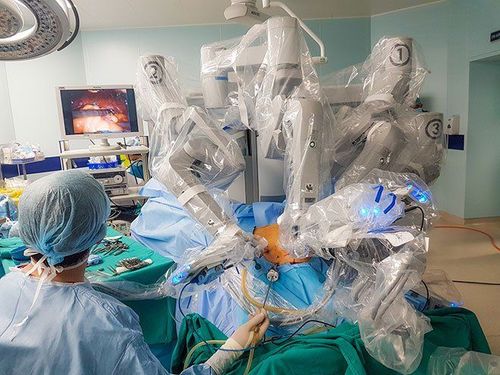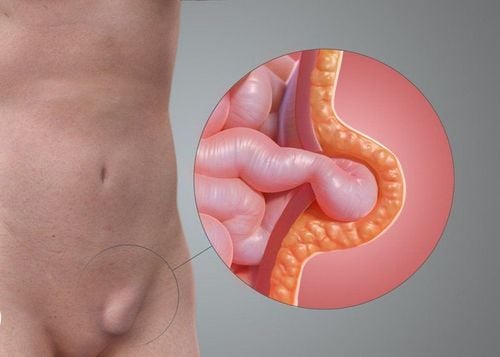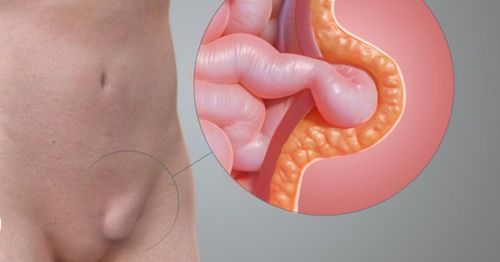This is an automatically translated article.
The article was professionally consulted by MSc Vo Thien Ngon - Urologist, Vinmec Da Nang International General Hospital.A strangulated inguinal hernia occurs when the tissues in the hernia sac become twisted. This condition can lead to necrosis, which means that the tissues in the hernia sac die because there is not enough blood supply. A strangulated inguinal hernia can cause symptoms of fever and the hernia area is swollen, red, inflamed, and very painful.
1. What is a strangulated inguinal hernia?
Inguinal hernia is one of the common pathologies in children. Normally after birth, the peritoneal canal in men, the Nuck tube in women is fibrotic and self-closing. If they do not self-seal, intra-abdominal contents pass through this canal into the inguinal region causing an inguinal hernia, and when these organs become strangulated in the inguinal canal, a strangulated inguinal hernia occurs.
Inguinal hernia is a serious and common complication of all types of hernias. Including inguinal hernia, umbilical hernia, femoral hernia, obturator hernia, white line hernia in which mainly inguinal and femoral hernias.
Strangulated inguinal hernia needs to be diagnosed very early and treated immediately because after only 6-12 hours, the organs will be necrotic leading to peritonitis, intestinal obstruction, toxic infection due to necrosis of organs (intestines, omentum, ovary, fallopian tube). and systemic disorders.
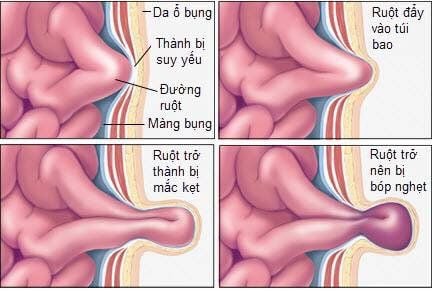
2. Is inguinal hernia dangerous?
This type of surgery is quite common, simple and has a low complication rate. In fact, without treatment, the patient may face more risks and complications than after surgery. Specifically, untreated inguinal hernias can lead to strangulated inguinal hernias. In women, the ovaries and fallopian tubes are often blocked in the inguinal canal or in the labia majora and can lead to ovarian infarction and necrosis.
Besides, many cases also have complications of inguinal hernia, because the hernia organ goes down but cannot be pushed up because it sticks to the hernia sac or because the viscera in the bag stick together. Incarcerated inguinal hernias often cause a feeling of entanglement, making them more susceptible to injury. Complications of hernia trauma, due to the large and descending mass relatively often, trauma from the outside causes contusion, rupture of internal organs...
However, like other surgical methods, Inguinal hernia surgery also carries certain risks such as:
Difficulty breathing, bleeding, reactions to anesthetics or other drugs. Infection. Persistent pain in the groin area. Affects blood vessels. Damage to nerves or nearby organs.
3. Treatment of strangulated inguinal hernia
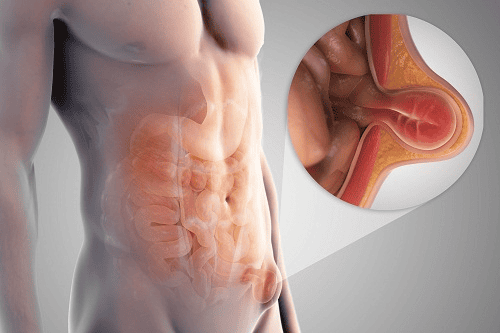
Inguinal hernia is a surgical emergency, the following treatment methods can be applied:
3.1. Conservation If the patient arrives very early, we can push up the strangulated inguinal hernia and monitor.
For young children, conditions come early, the whole body has not been poisoned, the way to proceed is:
Inject sedatives and pain relievers in appropriate doses. Soak half of the baby's body in a basin of warm water, wait for 15-20 minutes, the hernia mass can come up on its own. It is possible to gently massage the hernia mass by hand, but do not press it roughly to prevent internal organ rupture. When the viscera have been raised, it is still necessary to monitor closely to prevent intestinal necrosis secondary to causing peritonitis. 3.2. Surgery Currently, there are many different surgical methods such as: open surgery (Bassini, Lichtenstein...), laparoscopic surgery (TEP, TAPP...). Each surgical method has its own advantages and disadvantages. Surgery is the main treatment method aimed at:
Quick release of blocked hernia, anemia. Sew the pocket neck and cut the hernia sac. Abdominal wall recovery. Inguinal hernia surgery in children is the only way to solve inguinal hernia in children. Usually the incision is about 3-4cm along the inguinal flexion area. Therefore, when healing is often difficult to detect, ensuring aesthetics for the patient. After about a week, the incision will heal and the sutures will be removed.
It should be noted:
Do not deliver the bowel loops into the abdomen until there is no conclusive observation of the state of the intestinal loop strangulation. It is necessary to properly assess the possibility that the intestine can still be restored. Pay attention to the whole body and give resuscitation to replace water and electrolytes.
Please dial HOTLINE for more information or register for an appointment HERE. Download MyVinmec app to make appointments faster and to manage your bookings easily.





